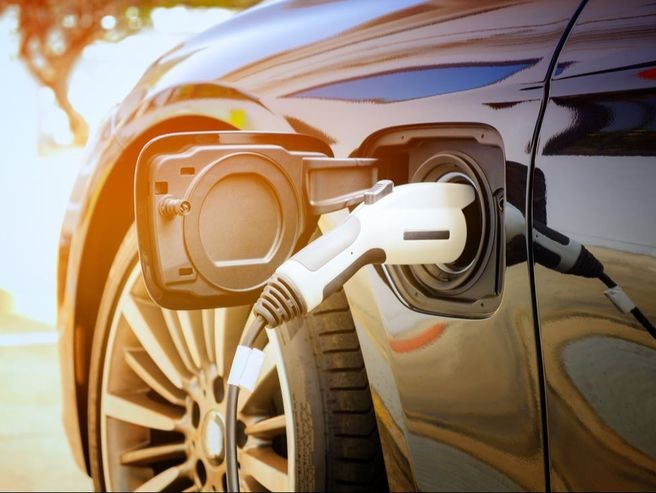
Fusion tech could greatly reduce charging time for electric cars
The design of a fusion reactor’s exhaust system
The current time taken to charge an electric vehicle could be reduced by more than two-thirds thanks to a fusion-related technology developed by former Culham PhD student Dr Jack Nicholas. Jack has worked on the concept of removing intense heat from a fusion reactors divertor (the exhaust region where hot plasma is ejected from the reactor) as part of his PhD, and then subsequently with EUROfusion.

The initial research was undertaken in Jack’s PhD at Oxford University receiving funding from both by CCFE and Rolls-Royce, the research focused on the design of a fusion reactor’s exhaust system. Exhausting the thermal power from a fusion tokamak is a critical engineering challenge. The life of components designed for these conditions has a strong influence on the availability of the machine. For a fusion power plant this dependence becomes increasingly important, as it will influence the cost of electricity. The most extreme thermal loading for a fusion power plant will occur in the divertor region, where components will be expected to survive heat fluxes in excess of 10 MW/m2 over a number of years. Jack’s research focussed on the development of a heat sink module for operation under such conditions, drawing on advanced cooling strategies from the aerospace industry.
From PhD to entrepreneurship: Qdot creation
The transfer of the technology has an organic feel as Jack’s work created within his Phd and time with Eurofusion was later exploited by Qdot, the company he founded himself in 2018 with two colleagues from the University of Oxford.
Qdot’s concept uses a specific battery cell geometry, combined with its high-performance cooling technology, to allow rapid dissipation of heat generated within the cell. Research shows that three of the biggest obstacles standing in the way of the mass uptake of electric vehicles are range anxiety, charge speed and cost.
His research into the exhaust heat removal challenge in fusion is relevant to electric vehicles because battery re-charging speeds are limited, primarily, by overheating. Qdot’s concept utilised Intellectual Property created within the fusion industry (where the technology was used to remove intense heat from a tokamak’s divertor), to develop a battery thermal management system for electrical vehicle batteries that will address all three issues.
A fusion tech to tackle three of the biggest obstacles standing in the way of the mass uptake of electric vehicles, range anxiety, charge speed and cost.
The design of most energy systems involves optimising the inevitable heat transfers involved to overcome the barriers to commercial viability, and to achieve widespread adoption. Qdot’s concept offers opportunities for improved battery performance within electrical vehicles both land and air based, in addition to this proof of concept projects could be undertaken in any setting where intense heat removal could improve performance of components, for example; power electronics.
As described previously the technology developed by Dr Jack Nicholas within his PhD enabled him to spinout a business to further develop the technology, generating new uses, specifically in electric vehicle batteries.
Qdot’s technology makes possible extremely fast charging, potentially adding 200 miles of range in just 10 minutes for electric vehicles. This will make mid-journey charging stops quick and convenient, increasing the effective range of a vehicle using a smaller battery pack. Considering batteries are one of the larger cost factors of an electric vehicle, this will also bring down the cost to OEMs and consumers. Qdot’s development enabled reduction in costs and improvements in performance against current electric vehicle batteries, addressing three of the biggest obstacles standing in the way of the mass uptake of electric vehicles, range anxiety, charge speed and cost.
